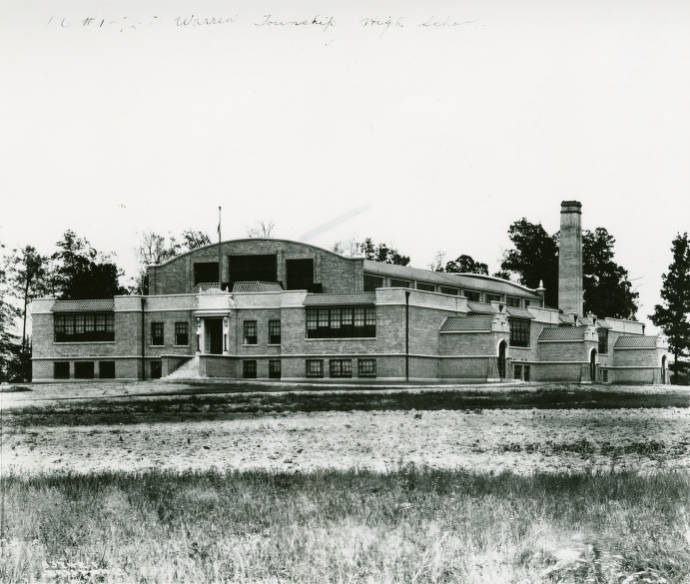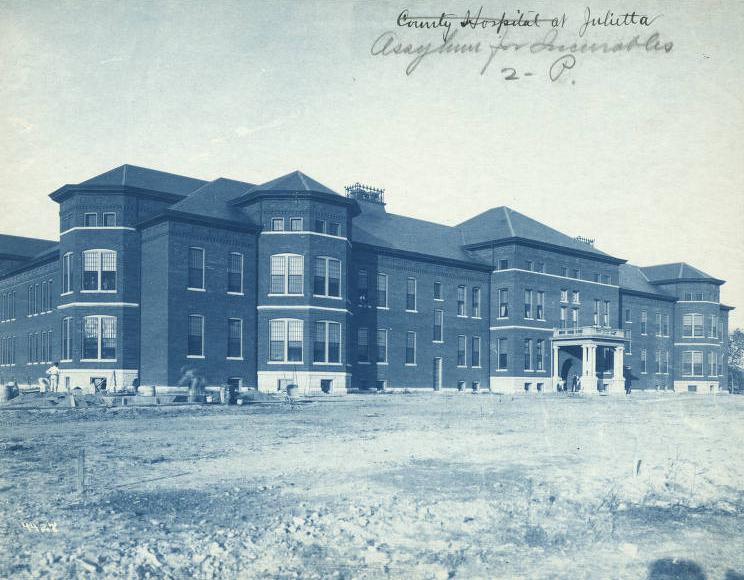Warren Township is located in the eastern portion of Marion County. When township boundaries were defined in 1822, commissioners named the area after Dr. Joseph Warren, a Massachusetts patriot in the Revolutionary War.

Early settlement began along roads cut through the district, including the National, Brookville, and roads. Cumberland Hall, a way station for travelers on the , opened in 1830 and attracted a cluster of homes that became , the township’s first community.
Farther south, Julietta was platted in 1870 as an agricultural service center on Brookville Road. In the 1880s, the hamlet had a population of 50 and boasted stores, a blacksmiths shop, and a post office.
Julietta was later known as the site of the Marion County Hospital for the Insane, which opened about 1900. The facility was plagued by mismanagement, neglect, and a shortage of funds. When patients were transferred to Central State Hospital in 1938, the buildings housed inmates from the county poor asylum. The occupied the site to care for the county’s low-income elderly until 1994 when bought the nursing home license from Marion County. In 1996, the county moved the last of the residents to Lockfield Village, a long-term care center on the campus of Indiana University Medical School. Verity College Education occupied the 25-acre facility until June 2012. Since 2016 the Hope Center Indy has maintained in-house ministries and programs.
About five miles from the Circle, was laid out in 1870 as a suburban refuge for wealthy families. An attractive curvilinear street plan, spacious homes, and a thriving cultural community made Irvington a unique neighborhood. was platted in 1913 as an agricultural settlement between 10th and 16th streets. Although now intensively developed with homes and apartments, Warren Park remains a quiet residential community.

Township settlements benefited from three rail lines that were constructed in the area between 1847 and 1855. Interurbans operated in the township from the early 1900s to the 1930s, but it was the automobile that made most of Warren Township easily accessible to downtown. In the 1960s and 1970s construction of I-465, I-70, and I-74 spurred additional development.
Population figures for Warren Township indicate slow growth in the 19th and early 20th centuries, but post-World War II developments brought sudden change. In 1900 the township counted about 4,000 residents; by 1940 that number had increased to 22,000. Between 1950 and 1970 the population increased from 34,000 to 86,000. While growth has slowed, the township still increased to a population of 106,191 by 2020.

The township’s peak period of growth coincided with the development of Shadeland Avenue in the 1950s and 1960s as an industrial corridor. , , , and RCA () opened expansive operations along the avenue and employed thousands of workers, many of whom built homes nearby. By the 1980s, however, several of the plants were idled and growth slowed.
The Metropolitan School District of Warren Township includes one early childhood center, nine elementary schools, three middle schools, one high school, one non-traditional school (the Renassaince School), and the Walker Career Center where students learn quality career and technical skills. The township also boasts the Warren Performing Arts Center that serves both the senior high school and the local community with concerts and performances by professional artists.
The township’s largest employers include the , the Metropolitan School District of Warren Township, and .

Is this your community?
Do you have photos or stories?
Contribute to this page by emailing us your suggestions.